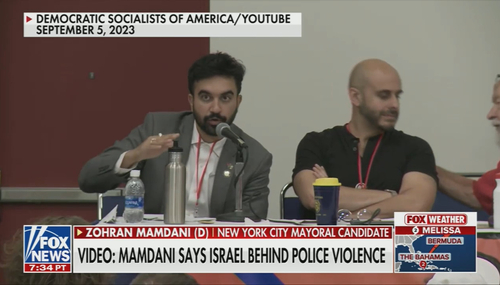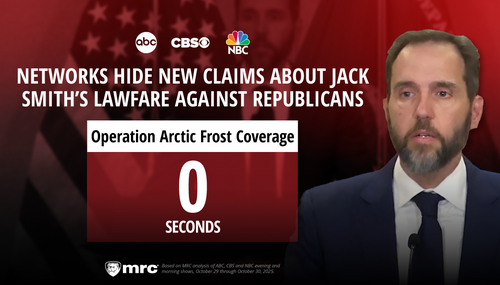The New York Times humorless, bean-counting movie critics Manohla Dargis and A.O. Scott surveyed the fall film season under this pair of judgmental headlines: “Hollywood, Separate and Unequal – The history of American film is the history of American racism.”
Dargis and Scott have a regular tag-team movie-ruining-gig: In March they focused their judgmental Oscar coverage on racism and reveled in “Watching a White Academy Squirm.” In the summer of 2015 they indulged in joyless feminist politics. Back in 2012 Dargis, the more radical of the two, blamed Ronald Reagan for lousy movies.
Dargis, a movie critic supposedly concerned about aesthetics over all, is even prepared to deny artistic achievement in the name of racial and gender bean-counting. The text box is ominous: “Insisting on the sanctity of art can just be another way of shutting our eyes and denying ugly systemic realities.”
When the academy unveiled its monochrome slate of acting nominees in January, a burst of activism followed, summed up by #OscarsSoWhite. The focus was on awards and the frustrating, infuriating homogeneity of American movies. Now, this fall brings the release of several high-profile features about African-Americans, including Ava DuVernay’s documentary “The 13th,” Nate Parker’s “The Birth of a Nation,” Barry Jenkins’s “Moonlight” and Denzel Washington’s “Fences.”
The existence of these movies is proof of progress in an industry that remains overwhelmingly white. They arrive in theaters as the United States is swept up in debates over mass incarceration, police violence, diversity and arguments about what “race” means. It is hardly just a black-and-white issue. But what the Swedish economist Gunnar Myrdal called “An American Dilemma” -- the legacy of African enslavement and forms of white supremacy -- remains polarizing.
After that intro, the discussion began. Scott reminisced about Robert Townsend’s 1987 cult classic “Hollywood Shuffle,” then moaned, “Ancient history and also déjà vu. Dig beneath the surface -- the breakthroughs and frustrations, the lightning-fast pendulum swing from “12 Years a Slave” to #OscarsSoWhite -- and you find the same stubborn problems. “Hollywood Shuffle” doesn’t need to be remade. It’s been updated in countless Dave Chappelle and “Key & Peele” sketches, all of which make a joke out of the painful reality that Hollywood still has a serious problem with black humanity.”
Dargis one-upped Scott in the grievance sweepstakes: “How could it be otherwise given that the history of American cinema is also the history of American racism? I’m reminded of this ugly truth every time I watch an old film in which there’s not a single character who isn’t white. Or the only black or Asian character is the maid or houseboy, serving the boss with a smile. Obviously much has changed, but too many new movies just play the tokenism game, using minorities as accessories or emblems of the white character’s presumptive good intentions -- like the Prius parked in the driveway.”
Dargis was ready to toss art out the window in the name of social justice: “It’s an institutional problem, which doesn’t mean it isn’t also an individual one. Along those lines we have to ask how vision -- art itself -- is used to rationalize and perpetuate racism, inadvertently or not. Are white directors who consistently work with primarily white casts asserting their creative vision or just racist? Most white directors make movies about white people, whose stories are framed as universal. The upshot is that whiteness is represented as the norm, which inevitably has a way of rendering everything else as “abnormal.” A white cast is a creative choice and just as problematic as the economic rationales that are trotted out to justify discrimination.”
Scott hedged on that point but nodded along to Dargis’s broader one: “Nobody wants to tell filmmakers what stories to tell or who to put in their movies. But insisting on the sanctity of art -- the individual artist’s right to pursue a vision -- can be a way of denying ugly systemic realities. You can’t necessarily blame a specific movie for being about the travails of a white guy, but surely the fact that something like 90 percent of all releases fit that description is a problem...."
After Scott pondered whether “Southside With You,” a movie about Michelle and Barack’s first date, could really be classified as a typical movie about young people dating, Dargis responded with what the Times calls a “mirthless laugh” (which sums up her review philosophy). Then she called for government intervention in the industry, which sounds awfully close to dictating what kind of movies get made.
Dargis: "The Pew Research Center estimates that by 2055 there will be no single racial or ethnic majority in the United States. But what happens until then? Embarrassing the studios doesn’t work; they’re immune to shame. That leaves a few options, including industry self-policing. The last Directors Guild of America contract, for instance, required that the major television studios create diversity initiatives. It may also be time for government intervention. The Equal Employment Opportunity Commission is looking into discrimination against female directors; perhaps it should also take on the entertainment industry’s hiring practices toward minorities. Certainly the whiteness of American movies seems proof enough that moviemakers openly and consistently violate Title VII of the Civil Rights Act of 1964, which prohibits discrimination because of race, color, religion, sex or national origin. Whatever the reason -- art, greed, indifference, ignorance, prejudice -- American movies remain defined by the principle of separate and unequal....And so it goes -- until, I suppose, American moviegoers say enough."
Or, more likely, moviegoers continue to find better things to do than worry about which actor is cast in which movie.




